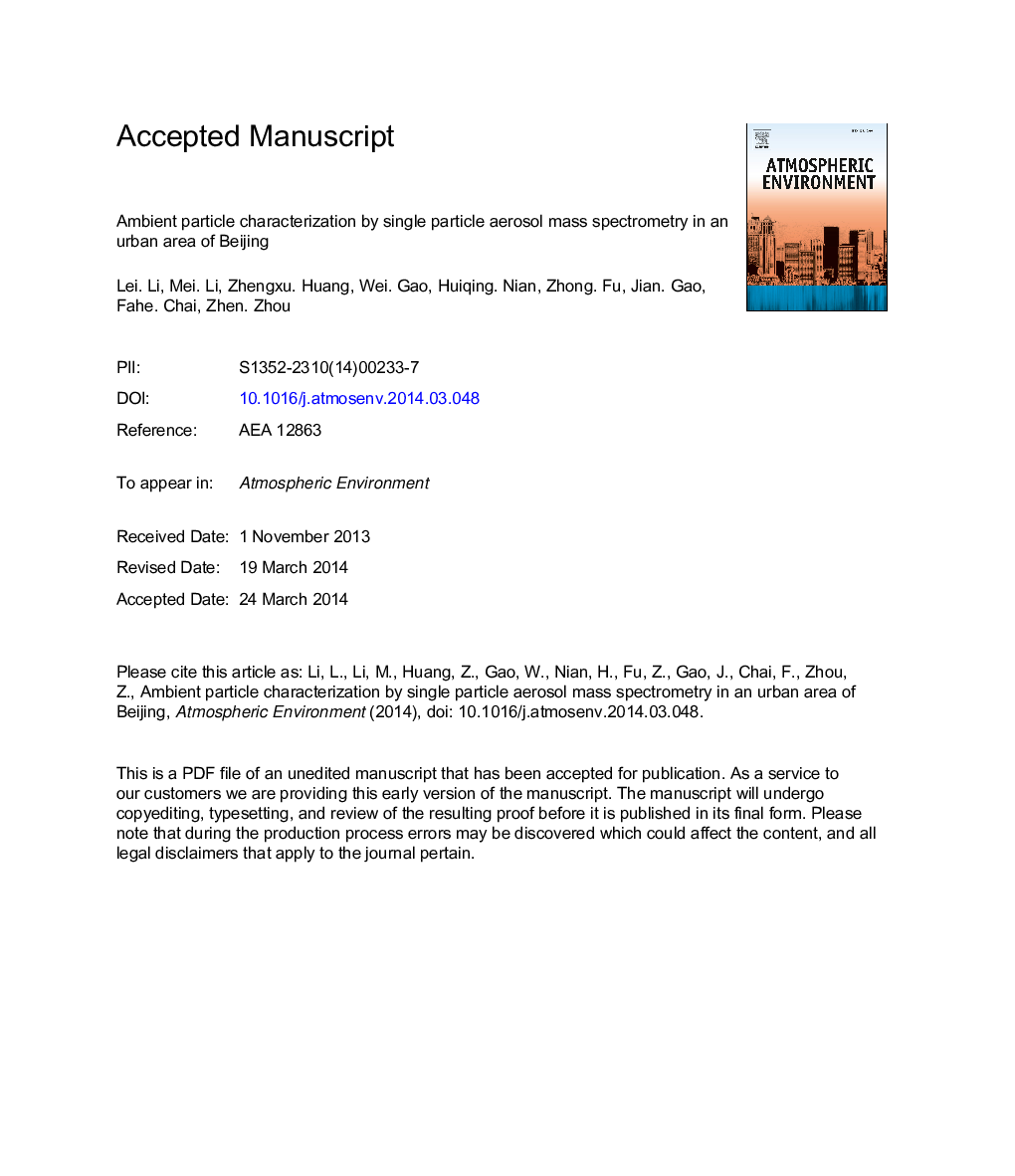| Article ID | Journal | Published Year | Pages | File Type |
|---|---|---|---|---|
| 6339592 | Atmospheric Environment | 2014 | 29 Pages |
Abstract
To investigate the composition and possible sources of aerosol particles in Beijing urban area, a single particle aerosol mass spectrometer (SPAMS) was deployed from April 22 to May 4, 2011. 510,341 particles out of 2,953,200 sized particles were characterized by SPAMS in combination with the ART-2a neural network algorithm. The particles were classified as rich-K (39.79%), carbonaceous species (32.7%), industry metal (19.2%), dust (5.7%), and rich-Na (1.76%). Industrial emissions related particles, rich-Fe, rich-Pb, and K-nitrate, were the major components of aerosol particles during haze periods, which were mainly from the steel plants and metal smelting processes around Beijing. Under stagnant meterological conditions, these regional emissions have a vital effect on haze formation. Organic carbon (OC) particles were attributed to biomass burning. NaK-EC was likely to come from local traffic emissions. Internally mixed organic and elemental carbon (OCEC) was found to be from possible sources of local traffic emission and biomass burning. It was found that coarse dust particles were mainly composed of four different types of dust particles, dust-Si, dust-Ca, dust-Al, and dust-Ti. It is the first time that SPAMS was used to study a dust storm in Beijing. Our results showed that SPAMS could be a powerful tool in the identification and apportionment of aerosol sources in Beijing, providing useful reference information for environmental control and management.
Related Topics
Physical Sciences and Engineering
Earth and Planetary Sciences
Atmospheric Science
Authors
Lei Li, Mei Li, Zhengxu Huang, Wei Gao, Huiqing Nian, Zhong Fu, Jian Gao, Fahe Chai, Zhen Zhou,
